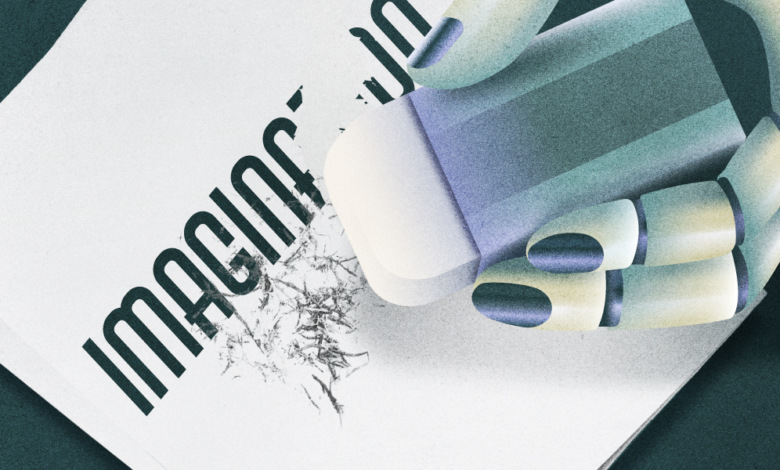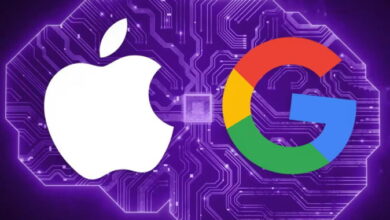AI Briefing: How top brands are saving more time and money with generative AI

With New York City full of chatter about AI during last week’s “Tech Week 2024,” marketers, technologists and legal experts gathered to discuss the high-stakes terrain of AI integration — and how to balance the promise of creativity and efficiency paired with plenty of pressing challenges.
At one half-day event hosted by organization AI Trailblazers, marketers from major brands took the stage to talk about their own AI strategies. And while AI’s long-term impact on advertising is still unclear, some are increasingly bullish on potential change.
At Mondelez, maturation of AI could impact between 10% and 20% of non-working media spend — adding up to between $30 million and $40 million — according to Jonathan Halvorson, global svp of consumer experiences at the confectionary giant. The money saved will be reinvested to build proprietary infrastructure, train AI models and keep data current, said Halvorson, who added the company has invested $100 million in AI.
“The savings should hopefully be the fuel to fund that model and be able to kick it so it’s meaningful in terms of P&L and to offset what is a big infrastructure cost in terms of talent, people, process and change management,” said Halvorson, who expects Mondelez’s personalized digital advertising to increase from 50% now to 95% by 2025.
Marketing execs also mentioned examples for how they’re using generative AI in actual campaigns. For example, Mondelez used a large language model to create personalized birthday songs and create Valentine’s Day videos animating customers’ love stories.
Mars Petcare has used AI to create geo-targeted pet adoption ads that inserted images of real dogs in each location, while Mastercard is using generative AI to help small businesses.
Using AI also has allowed marketers to create campaigns with much more efficiency. United Parks & Resorts — which includes theme parks like SeaWorld, Busch Gardens and Sesame Place — is using AI for copy optimization while also working with partners on using AI for media and creative optimization. One way is through listening to trends and quickly creating campaigns that turn on when trends emerge and turn off when trends die down.
“Instead of traditional targeting, we’ll listen to the trends,” said United Parks Chief Marketing Officer Marisa Thalberg. “We’re a passion- and lifestyle- based marketer, so based upon the passions that are sparking, our engine triggers an alert and links back to ads it would recommend that we’ve already got loaded. It can use generative AI to adapt and personalize. And then the marketer within 15 minutes can check everything, launch the campaign and go.”
Others are also looking at ways to scale creative assets. Cheryl Guerin, evp of global brand strategy at Mastercard, said a newly launched Sonic Brand Studio uses AI to change aspects of Mastercard’s branded sounds, depending on the context and formats of various ads.
And at Diageo, AI has helped create personalized drink recommendations and ways to create personalized packaging that would have taken “many, many people and many, many companies to scale and get the same return,” said Sophie Kelly, the distiller’s svp of global tequila categories. But to her, scale is about more than just marketing optimization.
“Scale for me is how we’re using it the right way, across the business,” Kelly said. “What I’m really interested in is what are we doing in relation to product development, what are we doing in relation to product platforms that we’re developing, and how are we actually scaling it across the business creatively to accelerate our business performance.”
There are also plenty of challenges yet to be addressed, from the accuracy of LLMs, data taxonomy, avoiding bias, and alleviating concerns about data security and copyright issues. (Halvorson recalled changes Mondelez made to its data taxonomy seven years ago that included building in 40 variables for every creative asset.)
“If you create content that is maybe health related or giving nutritional advice, there’s still very much the need for a human to make sure that what you’re putting out there is accurate and safe for consumers,” said Mars Petcare CMO Jean-Paul Jansen. “That’s one thing that we see very much as a key challenge.”
Some marketers said agencies should change their model to adopt AI while also offering clients ways to rent AI tools. However, that will also require more transparency about compensation models to show tech and staff costs. There’s also the ongoing question about how to choose between various AI models when setting up an AI strategy and how to make sure providers uphold standards for brand safety and data privacy.
“This is where the industry needs to come together and create some standards, some brand safety needs,” Mastercard’s Guerin said. “We have to do better than where we are right now in social and some of the social platforms that we talked about where tools are finally coming into play. There needs to be a set of standards out there so that we have some choices and we have some protection and comfort.”
Prompts and Products: AI news and announcements
- LinkedIn expanded its AI advertising tools with new ways to customize ad creative, optimize targeting and adding an AI assistant for campaign guidance.
- Google updated its NotebookLM with expanded access and new tools for analyzing and organizing news using its Gemini large language models.
- Perplexity, the AI search platform, launched its first ad in the form of a fake movie trailer during the NBA finals.
- The AI image generating platform Pika raised $80 million in additional funding.
- Plot, a startup offering a platform for creative teams, added new social listening tools for video content powered by LLMs to analyze video transcripts, and comments.
- The digital rights organization NOYB asked a dozen European countries to take action against Meta’s AI policies and practices related to data privacy and content before they take effect June 26.
- Semrush, an SEO platform, announced a new enterprise SEO platform that uses “AI-driven content analysis and optimization.”
- State lawmakers in New York state proposed a bill that would require parents to give consent for social platforms to serve their kids algorithmic content.
- Current and former OpenAI employees called for more transparency and changes for the startup, accusing it of having a “reckless” and “secret” culture. (NYT)
- The U.S. Justice Department and Federal Trade Commission announced plans to pursue antitrust inquiries against Microsoft, Nvidia and OpenAI.
- The Future of Privacy Forum, a privacy rights organization, announced a new center focused on AI policy, privacy and compliance.
- Google, WhatsApp and Adobe also released new AI tools for brands that help with ad optimization, customer data and other features.
1s and 0s: AI research and stats
- Gartner predicts 75% of businesses will use generative AI to create synthetic audiences by 2026, up from 5% in 2023.
- A survey by the Reuters Institute and University of Oxford examined how respondents in six countries think about the news industry using generative AI. Questions related to how AI could impact the industry, whether respondents trust organizations to use it responsibly, and whether people will pay more for news made mostly by AI. Researchers also examined how chatbots reacted to questions and misinformation related to upcoming European elections.
- The International Association of Privacy Professionals released its annual AI Governance report that includes guidance and details about various state, national and international laws.
Coming soon:
- Apple’s WWDC conference takes place today (June 10), and will likely include AI updates from the tech giant;
- The Tribeca Film Festival, which began last week and runs through next weekend, has a series of AI-generated short films in partnership with AI startups Runway and OpenAI.
Other AI stories from across Digiday



